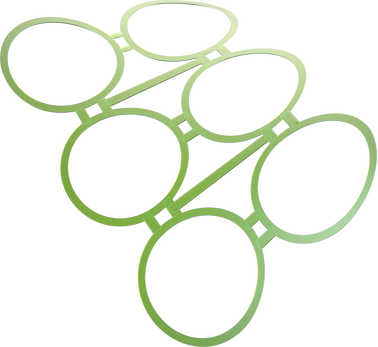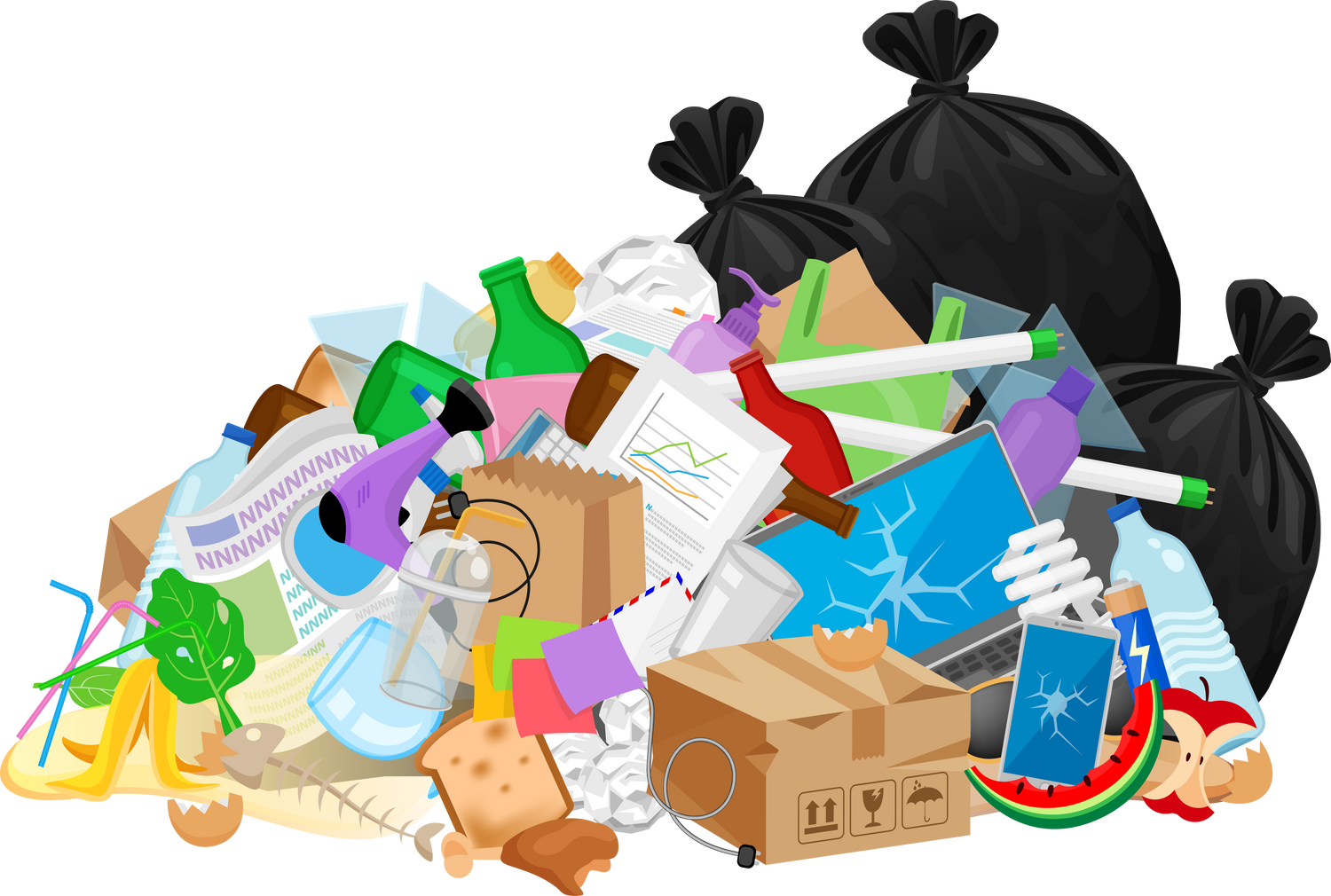
Welcome to our website, a platform dedicated to unravelling the pressing issue of plastic pollution and delving into its intricate web of implications. Here, we embark on a journey of exploration, seeking to shed light on the multifaceted dimensions of this global challenge.
Join us as we unveil eye-opening statistics, delve into diverse perspectives on plastic sustainability, and examine the profound impact of government regulations. Together, we will transcend the boundaries of plastic prohibition and embrace a holistic approach that empowers individuals, businesses, and communities to forge a path toward a more sustainable and inclusive future.
Let us engage in meaningful dialogue, explore innovative solutions, and inspire collective action to create a world where plastic pollution becomes a distant memory.
The Unsustainable Impact of Single-Use Plastics:
According to environmental researchers and industry reports from Oceana Canada, the amount of plastic waste ending up in landfills and the natural environment has reached alarming levels, posing a significant threat to our health, environment, and ecosystems.
In a scenario where the global population is represented by a group of 100 individuals, Canada's population would amount to just half of a person.
Despite Canada's Small Population...
Canada makes up 1.4% of the world’s total plastic production, equivalent to a staggering 4.6 million tonnes of plastics used annually.
1
0.5%
In fact, on average, each person in Canada contributes approximately 125 kilograms of plastic waste.*



Furthermore, by 2030, the projected annual volume is estimated to exceed 6 million tonnes.
However,
While individual responsibility certainly significantly reduces plastic waste, it is essential to recognize that the magnitude of Canada's plastic crisis extends far beyond individual actions. As Tony Walker, an expert in Environmental Studies at Dalhousie, aptly points out, "the continued production, use, and disposal of single-use plastics is unsustainable and prevents Canada from meeting its commitments under the Federal Sustainable Development Strategy." Indeed, it is crucial to delve into and confront the broader systemic issues contributing to the unprecedented use, disposal and manufacturing of single-use plastics. By doing so, we can foster sustainable solutions and create a lasting impact on Canada's plastic crisis.
Oceana, "Stop Plastic Pollution"
Tony R. Walker, "Canada is right to classify single-use plastics as toxic"
WHat happens to our plastic waste?
The fate of our plastic waste is just one of the barriers to achieving a sustainable future, as a significant proportion ends up in environmentally damaging destinations.
6%
According to the OECD, out of the total 4.6 million tons of plastic waste generated only a small 6% is recycled.
3
4% of that waste is incinerated - releasing harmful pollutants into the air. Another 7% is mismanaged, either through lack of infrastructure or contamination.
4%
The remaining 82% ends up in landfills, creating long-term challenges for waste management and environmental sustainability.
7%
82%
3
Outside of Canada? Visit the OECD website to compare your nation's waste management globally: https://OECD.org.
With these statistics in mind,
It is resoundingly clear that urgent measures are required to combat plastic waste in Canada. The detrimental impacts of plastic waste, from air pollution due to incineration to the mismanagement and contamination of waste, cannot be overlooked. However, the approaches to addressing plastic waste are not without differing opinions.
The Prohibited six
Navigating the Plastic Debate
When it comes to plastic consumption, the consensus is that reduction is crucial for achieving sustainability. However, the point of contention lies in the matter of accountability.
From the role of large industries to individual responsibility, uncover the range of opinions and insights that shape the ongoing debate on plastic sustainability.
Discover the bold steps taken by the federal government to combat plastic pollution.
Challenging the Status Quo
Unveiling the Plastic Puzzle: Separating Fact from Fiction
Explore alternative perspectives that advocate for a broader approach in tackling plastic pollution.
Dive into the debate as Canada's leading plastic producers shed light on the nature of plastic and its impact on our environment

The Prohibited six
As part of its commitment to achieving zero plastic waste by 2030,
the Government of Canada has introduced the Single-use Plastics Prohibition Regulation (SUPPR), effectively prohibiting everyday consumer items:
4
4
stir sticks
checkout bags
take-out containers
PLastic Cutlery
PLastic straws
Ring Carriers

The Top Offenders:
Recycling Rate:
>15%
Checkout Bags:
~0%-1%
Straws:
~0%-1%
Stirs sticks:
~0%
Cutlery:
The Regulation aims to eliminate 1.4 million tonnes of plastic waste by 2032—a remarkable achievement considering:
Each category of Single Use Plastics (SUPs) contributed to of our annual waste output.
5%
5
5
Government of Canada, Regulatory Impact Statement Analysis
Plastic Consumption Unveiled:
A Sector-wise Analysis of Plastic Usage in Canada
Packaging
Automotive
Undoubtedly, the Regulation is a commendable step in addressing the pressing issue of plastic waste and pollution.
However, it is imperative to address the disparity between the relatively modest impact of consumer-based SUPs, which contribute only 5% of the total plastic waste, and the substantial plastic consumption and waste generated by large industries, accounting for an alarming 95%.
Consumer Plastics
Electronics
6
Textiles
6
OECD, Global Plastics Outlook.
Construction
Plastic packaging dominates the landscape, given its extensive application in food and beverage packaging, household goods, and personal care items.
47%
6%
Single-use plastics make up 6% of our total usage. They are particularly problematic because they take 100s of years to break down, despite their "usable lifespan" of 15 minutes.
6
7
7
Queensland Government "How to reduce consumption of avoidable and single-use plastics"
While the federal government asserts that Canadians have a “unique responsibility” to address plastic waste, different groups and individuals have varying opinions.
Government of Canada, 2023
Let's Hear From the Historians:
Challenging the Status Quo
8
In Canada, the task of managing municipal solid waste, including plastic waste, is a shared responsibility between consumers and municipalities. In other words, both consumers and local authorities play a vital role in tackling plastic waste and promoting recycling practices. However, specific challenges arise when dealing with certain types of plastic waste, particularly when it comes to "food packaging materials."
In a study conducted by environmental historians Avalon Diggle and Tony Walker, new insights were gained into household and local business waste composition. The study revealed a concerning finding: In 2020, food packaging materials accounted for a significant "one-third of all solid waste."
8
Even more concerning is the dismal recovery rate for recycling or reuse of solid waste. According to their study, only 20% of this waste was effectively repurposed.
8
Avalon Diggle and Tony Walker, "Implementation of harmonized Extended Producer Responsibility"
The Solution? Recycle More!
Unfortunately, in many cases, the costs involved in collecting and handling plastics outweigh the potential value they can bring when sold in secondary markets. This means that it becomes less financially viable to invest in recycling programs that can properly manage reusable plastics.
9
Moreover, as Diggle and Walker point out, even the production of recycled plastics faces significant economic challenges compared to primary or raw plastics. In fact, primary plastics are also "highly subsidized," emphasizing the need for policies and incentives to level the playing field and encourage more sustainable practices in the plastic industry.
8
EPR
Extended Producer Responsibility (EPR) strategies ensure that large producers are held accountable for the number of primary plastics that go unrecovered in municipal solid waste.
8
What do they propose?
By adopting EPR, producers are encouraged to take proactive measures to reduce waste, promote recycling, and "improve their packaging design. "
8
The Uncertainties of Canadian EPR Strategies:
Despite implementing Extended Producer Responsibility (EPR) strategies since 2017, Canada still faces challenges in their implementation:
- The current EPR approach lacks provisions for producers to bear the "social and environmental costs," which undermines the ability to address "marine and environmental" plastic leakage.
- The range of products regulated under EPR is too narrow; single-use plastics only scratch the surface while wrappers and bottle caps go unregulated.
- "Public education and awareness" is not yet a top priority.
9
Instead, some researchers propose that Canada should consider adopting the Polluter Pays Principle (PPP) in conjunction with their EPR strategies:
- PPP holds polluters accountable for the "costs of eliminating pollution and restoring the environment" - thereby, levelling the financial playing field of removing harmful waste
- The PPP also includes a wider range of products under PPP, such as beverage bottles, bottle caps, balloons, cigarette filters and food packaging, ensuring producers bear the true costs of environmental damage.
In addition, they argue that outreach initiatives can help reduce indiscriminate disposal, encourage sustainable choices and promote accountability
9
Lisa Baxter, Zoe Lucas and Tony R. Walker, "Evaluating Canada's single-use plastic mitigation policies"
What does this look like in practice?



The top brands of litter found in Toronto


To provide a glimpse into the real-life impact of outreach efforts, Greenpeace conducted an audit of plastic litter in major Canadian cities, including Vancouver, Toronto, Montréal, and Halifax.
With the dedicated support of 200 volunteers, they embarked on a meticulous process of collecting, categorizing, and documenting the litter. This audit shed light on the true culprits and top contributors to the plastic problem.
9
Now, that's citizen science in action.
10
10
King's skepticism regarding implementing the SUPR is warranted, especially considering Canada's ongoing export of plastic waste. Surprisingly, Canadian law still permits the export of certain materials like paper and metals for processing - with a large amount of unrecyclables slipping through the cracks.
It is essential for the SUPR to not only address domestic plastic consumption but also take responsibility for the environmental consequences of exported plastics.
Without effective oversight and accountability, there is a risk that the SUPR may not fully achieve its intended goals and may inadvertently contribute to global plastic pollution.
11
11
Rachel Ward, Harvey Cashore, Chantal Lavigne, & Gil Shochat, "Illegal Canadian trash keeps ending up overseas"
Reuse, Repair & Recycle
Consumption
Production
Distribution
12
Extraction
Production
Distribution
Consumption
Disposal
12
12
National Zero Waste Council, Executive Summary
Key Takeaways
It may not be enough to place the burden solely on consumers or rely on fragmented recycling programs. Instead, we must adopt a more transformative mindset that embraces and combines extended producer responsibility, industry accountability, and sustainable packaging.
Balancing FAct:
Environmental Impact, Reuse Potential, and Unintended Consequences
A closer look at the impact of plastic bag regulations reveals a range of behavioural and socioeconomic factors that challenge our assumptions. In this analysis, we dive into the two studies that shed light on the multifaceted and misunderstood nature of disposable bags, regulatory policies and their implications for the environment, consumer behaviour, and waste management.
The Study:
In 2017, the Quebec Government commissioned an "impartial and trustworthy scientific analysis" of plastic shopping bags, aiming to provide policymakers with the necessary information to discern which bag options offer the greatest environmental benefits. This initiative was driven by their commitment to informed decision-making in the transition to sustainable alternatives and regulatory policies.
Specifically, the study's life cycle analysis (LCA) sought to shed light on the potential outcome of banning plastic bags.
Their Findings
Their findings unveiled that:
- Paper and biodegradable plastics had the highest negative impact on human health and ecological health.
- Conventional plastics emerged as having the most favourable impact on human and ecological health, mainly due to their low dependency on fossil fuels.
Moreover, they argued, such a ban would trigger an upsurge in plastic consumption of garbage bags, which are 76% thicker than their conventional counterparts.
Now, let's take a moment to consider an intriguing case study that might add some nuance to the discussion.
The Rise of Plastic Bag Restrictions: A Case Study
American economist, Rebecca Taylor sought to answer the question: “Do bans on plastic carryout bags cause consumers to increase their purchases of unregulated plastic trash bags?”
From 2007 to 2016, over 200 U.S. municipalities took action by implementing regulations to curb the use of disposable carryout bags (DCBs). These measures aimed to reduce plastic bag consumption, enforcing bans on their use and introducing small charges for paper alternatives - however, trash bags and liners were still available for consumption.
Her findings: Counteracting Progress
Her case study revealed that a significant portion of the reduction in plastic bag usage resulting from DCB policies was counteracted by increased consumption of trash bags.
Meaning, despite the elimination of 40 million pounds of plastic carryout bags...
The purchase of small, medium and tall trash bags increased by:
190%
Rebecca Taylor, Journal of Environmental Economics and Management
Overall,
Taylor's study calls for policies that strike a balance between environmental concerns and consumer behaviour. Ultimately, she advocates for a reevaluation of the prevailing notion that bag regulations are the most effective method of combatting plastic use and emphasizes the necessity of exploring alternative approaches.
A Noteworthy Observation
When examining the issue of plastic bag regulations, it is essential to approach it with a critical eye and consider multiple perspectives. On one hand, it is important to acknowledge that the Canadian plastics industry has a vested interest in promoting and maintaining the use of conventional plastics.
On the other hand, studies like Taylor's offer valuable insights into the practical aspects of plastic bag usage and reuse. She even found that prior to regulation, a substantial proportion of plastic carryout bags were already being repurposed as trash bags. Factors linked to reuse practice encompassed various socioeconomic factors, such as:
- Having dependents
- Engaging in bargain shopping
- Purchasing a higher quantity of items during each trip
In the larger picture, understanding the socioeconomic considerations associated with plastic bag reuse provides insights into the drivers behind consumer behaviour and waste management, while also highlighting the need for targeted and holistic approaches in reduction efforts.
What does a holistic approach look like?
Instead of focusing on what we shouldn't do or shouldn't buy, let's shift our attention to actionable steps we can take in our day-to-day lives:
Volunteer: Take part in citizen science programs to help ensure Canada's regulations follow through on their goals.
Make Your Voice Heard: Advocate against the mismanagement of plastic waste and promote responsible waste disposal practices. #StopPlasticPollutionTogether #UnitedAgainstPlastic
Foster Communication: Engage in dialogue with your neighbours, friends, and local organizations to collectively address your concerns.
Be Resourceful: Give your plastics a second life and seek out sustainable alternatives whenever possible.
Reduce Where You Can: Try contributing to a circular economy, and if necessary try switching to in-person shopping to help offset carbon emissions of shipping.
Participate: Organize community clean-ups to help remove plastic waste from our natural environments.
Educate Yourself and Others: Seek out articles (or visit our resource page), and share them with your friends and family
Remember, it doesn't stop there. The government also bears the responsibility of actively engaging in addressing plastic pollution. Here's what we propose:
Promote Circular Economy Principles: Encourage the transition to a circular economy by promoting recycling, reusing, and reducing plastic waste.
Waste Management Infrastructure: Improve waste management systems, including recycling facilities, waste collection, and sorting infrastructure, to ensure effective management.
Foster International Cooperation: Collaborate with other countries and international organizations on a global scale through knowledge sharing, policy coordination, and joint initiatives.
Government Subsidies: Small businesses are key drivers of innovation and sustainability. Government subsidies can empower them to invest in eco-friendly technologies, develop plastic alternatives,
Support Innovation in Plastic Alternatives: Provide financial incentives and support for developing sustainable alternatives to single-use plastics.
Strengthen enforcement and penalties: Implement strict enforcement mechanisms and penalties for non-compliance with plastic pollution regulations to deter illegal dumping and improper disposal of plastic waste.

Through exploring various perspectives and insights, we have gained a deeper understanding of the complex challenges and potential solutions surrounding the unprecedented use and disposal of single-use plastics.
One core insight that emerges is the need to go beyond individual actions and address the systemic issues contributing to plastic waste. While individual responsibility is crucial, it is vital to recognize large industries' substantial and pervasive role and the limitations of consumer-based solutions alone.
Our argument adds to the existing conversation and political debate on sustainability, waste management, and environmental preservation. By shedding light on the disproportionate impact of different types of plastic waste, the potential of Extended Producer Responsibility (EPR) and the Polluter Pays Principle (PPP), consumer education and the transformative potential of a circular economy, we contribute to the ongoing discourse on mitigating the plastic crisis.
The implications of our argument extend beyond academic discussions. They have real-world consequences for policy formulation, as governments must adopt more comprehensive and effective strategies to address plastic waste. For instance, the healthcare sector can raise awareness about the health risks associated with plastic pollution, while our school systems can integrate sustainability education and promote interest in taking action.
However, it is important to acknowledge the limits of our study. While we have explored various aspects of the plastic waste problem in Canada, some areas still require further research. Questions about the economic viability of recycling programs, the impact of plastic bag regulations on consumer behaviour, and the long-term social and environmental costs associated with plastic waste warrant deeper investigation.
By addressing this problem head-on, we can pave the way for a more sustainable future where the detrimental effects of plastic waste on our health, environment, and ecosystems are mitigated. As individuals, industries, and policymakers, we must take decisive action and ensure a cleaner and healthier planet for future generations.
Resources/ Bibliography


